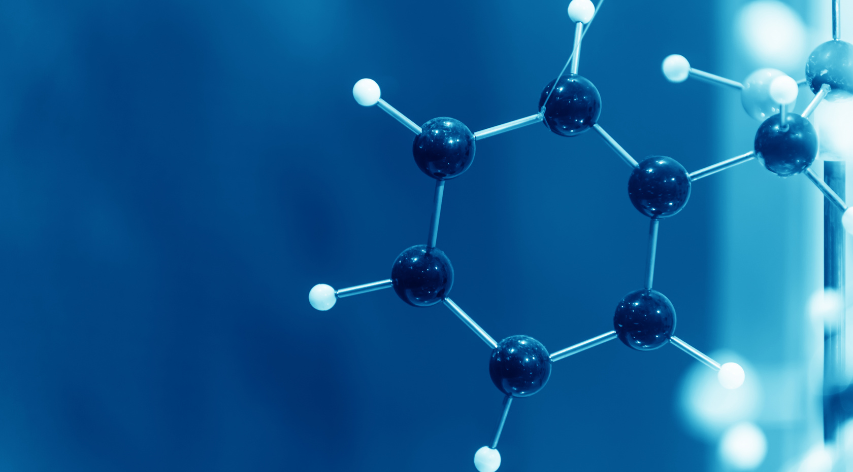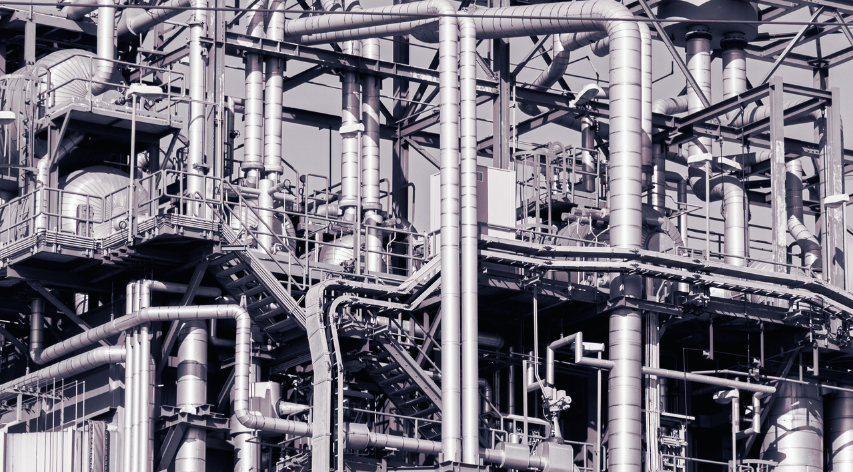Origins and Fates of Chlorides in Hydroprocessing Units – Part 3: Managing the Chlorides


The first two articles of this series provided a methodical approach to identifying a chloride problem in a hydroprocessing unit, determining the size of the problem, and narrowing it down to a likely source or sources. This final article addresses approaches to dealing with various sources.
Step 4 – Managing the Chlorides
Now that you have a clue about the magnitude of chlorides present and where they might be coming from, you can address the problems. There are three fundamental strategies or options for controlling chlorides in a hydroprocessing unit:
- Keep chlorides out
- Intercept what gets through
- Design and monitor for chlorides
By the application of these strategies, individually and in combination, chlorides have been effectively controlled in many units.
Keeping Chlorides Out
As a general rule, target to have much less than 2-3 ppm chlorides in feed and less than 0.5 ppm in makeup reformer hydrogen to a hydroprocessing unit. In eliminating chlorides from the feeds, consider the following:
- What potential sources were implicated using the Table 2 checklist presented in the previous article. Run the sources to ground.
- If possible, select crudes that have low salt content, or at least a salt content within a range you can tolerate. Eliminate any crude source that has demonstrated high organic chloride contents or penalize that crude’s value consistent with its impacts. Crude pricing may make this option difficult to implement.
- Dry the crude as much as possible before it reaches the crude unit. Keep the crude warm in tankage to maximize water separation. Water draw the crude tanks regularly. Consider using one of the materials marketed by treatment chemical suppliers to accelerate separation.
- Pay attention to desalter performance and consider a second stage of desalting. Where single-stage desalting removes 90-95% of the salts; two-stage desalting will remove 98-99% of the salts. The second stage targets the magnesium and calcium chlorides more. This may be enough to avoid problems.
- Caustic can be injected into the desalted crude to neutralize HCl released in the crude unit by hydrolysis. This can help reduce crude unit corrosion and intermediate product chloride levels; however, caustic may negatively affect the vacuum and coker units downstream.
- Run designed experiments on your crude, vacuum, and coker towers to identify the operating conditions that minimize chlorides in the hydroprocessing feeds.
- Dry hydroprocessing unit feeds are essential. Upstream systems should ensure good water separation and feed tanks should be regularly water-drawn to keep salts out of processing units. It is a good practice to use swing-line draws from your tanks where possible. Dry stripping (reboiling) feeds is preferable to steam stripping (which guarantees a wet feed).
- For chlorides present in reformer hydrogen, installation of a cold chloride adsorbent (alumina) bed ahead of the makeup hydrogen compressors will eliminate most of the chloride. Alumina beds can take up, perhaps, 10-15% chloride. This is a proven technology. If you already have a chloride adsorber on makeup gas, be sure it is working correctly. Calculate the expected bed capacity and life. Change the bed when you calculate that it would be spent, don’t wait until you detect breakthrough.
Intercept What Gets Through
Your second line of defense against chlorides is to control what gets through into the hydroprocessing unit feed. One ppm of chlorides in 50,000 BPD gas oil is about 16 pounds per day or about 3 tons per year. Options for controlling the chloride slip within a unit include:
- Wash the effluent exchangers with condensate. Meet the same rate, water quality, and design configuration requirements defined in API RP 932 (7), as applied to an ammonium chloride case. Inject condensate upstream of the first exchanger where chlorides may deposit as determined by the equations presented earlier. There must be enough condensate for about 25% to remain free liquid at the injection point. Allow enough downstream piping for the condensate to mix well (perhaps 30 diameters) or install an inline mixer (which will not block flow if it fails); otherwise, the condensate droplets will damage the downstream piping or exchanger by erosion or erosion/corrosion.
- If the chloride and nitrogen levels in the feed are low enough, condensate injection can be intermittent. This frequently works in naphtha and jet hydrotreaters. It may even be worth dropping unit pressure and temperature for a good, intermittent wash every few months. Sample and analyze the wash water to determine the length and frequency of washing. The required time is longer than you might think. You cannot leave any salt deposit or it will be more corrosive. Wash water pH can be moderated by ammonia or non-volatile amine injection; but avoid contaminating the product with nitrogen if it is reformer feed.
- Where chloride deposits in fractionation towers or draw systems, periodic or continuous water wash is also useful. Water washing for 4-12 hours every 2 to 6 months has been used to remove deposits with success. Again, be sure all the salts are removed during the water wash.
- For fractionator preheat exchanger problems, the quality of water separation ahead of the exchangers is crucial. To aid in separation, keep your high pressure separator temperature above 90OF, but not over 105-110O Separation of water and oil must be better than 99% efficient. You need to remove enough water so that all the remaining water evaporates in a relatively cool exchanger – thereby reducing the risk of corrosion.
- You may be able to simply raise separator oil level and help yourself. A review of residence times and separator configurations, along with a water balance, should indicate if improvements are needed here. Rate increases over time often defeat a separator that used to be adequate at lower rates. Water coalescing and separation seem to be as much art as science. A combination of coalescing pads and horizontal plate separators have been fairly effective in difficult cases.
Design and Monitor for Chlorides
If you can’t keep the chlorides out and you can’t make them go where you want, you’ll have to otherwise cope with their presence. A few techniques that have been successful are:
- Expect increased corrosion in the areas described earlier. Plan to increase metallurgical inspection and plan on more frequent retubes and replacements of bundles and shells.
- Select metallurgies that are resistant to chloride attack. Exchangers where corrosion may be most aggressive may require alloy tubes (e.g., Inconel 625 for tube-side reactor effluent), but the lower-pressure shells (fractionator feed) may still use carbon steel with large corrosion allowances. AL6XN and 2205 have been used with limited success where corrosion was moderate. In crude units, titanium has been successful when chlorides are present.
- Avoid creating dead spots and cold zones in susceptible exchangers. Keep the exchangers well insulated and review your baffle arrangements. Wet NH4Cl deposits on the shell are troublesome, since they can result in shell corrosion. Thermography of the shell can help spot potential problem temperature zones.
- Corrosion inhibitors may help resist damage in the fractionation and effluent systems in cooler zones. In naphtha reformer pretreater service, however, they may send unwanted nitrogen to the reformer.
- Review your fractionator or stripper relief system design for tube failures in preheat exchangers. API Recommended Practices 520 and 521 (5, 6) contain published guidelines for tube failure scenarios.
- Establish good chloriding agent receiving practices. Never put any chloriding agent to the sewer, flare, or recovered/slop oil. If there is extra agent after filling your chloride agent drum, send it back and accept the restocking charge.
- Monitor, monitor, monitor. Watch for chloride deposits and damage when the unit is down for turnaround. Track feed chlorides by frequent sampling. Track chlorides in your wash water. Watch for losses in heat transfer in exchangers where chlorides may deposit. Chloride balance your reformers and isomerization units. Watch your recovered/slop oil organic chloride content. Watch your sour water skims for organic chloride.
Conclusions
Chlorides can enter a hydroprocessing unit via several routes. They will adversely affect unit reliability. The primary keys to controlling the adverse effects center around elimination of the incoming chlorides, intercepting the chlorides that do enter, and controlling the effects of the remaining chlorides.
By applying the principles discussed here, you can successfully steer clear of the pitfalls posed by chlorides in hydroprocessing units.
References
- Lieberman, N. P., “Four Steps Solve Crude Overhead Corrosion Problems,” Oil & Gas Journal, July 5, 1993.
- Lieberman, N.P., Process Design for Reliable Operations, Gulf Publishing Company, Houston (1988).
- Petreco Division, Petrolite Corporation, Impurities in Petroleum, Houston (1958).
- Journal of Chemical Physics, V. 12, #71318 (1944).
- American Petroleum Institute, Recommended Practice 520, Sizing, Selection, and Installation of Pressure-Relieving Devices in Refineries, Part I – Sizing and Selection, Fifth Edition, July 1990.
- American Petroleum Institute, Recommended Practice 521, Guide for Pressure-Relieving and Depressuring Systems, Fourth Edition, March 1997.
- American Petroleum Institute, Recommended Practice 932, Design, Materials, Fabrication, Operation, and Inspection Guidelines for Corrosion Control in Hydroprocessing Reactor Effluent Air Cooler (REAC) Systems, Second Edition, January 2014.
If you would like to submit an Information Request please click below:






